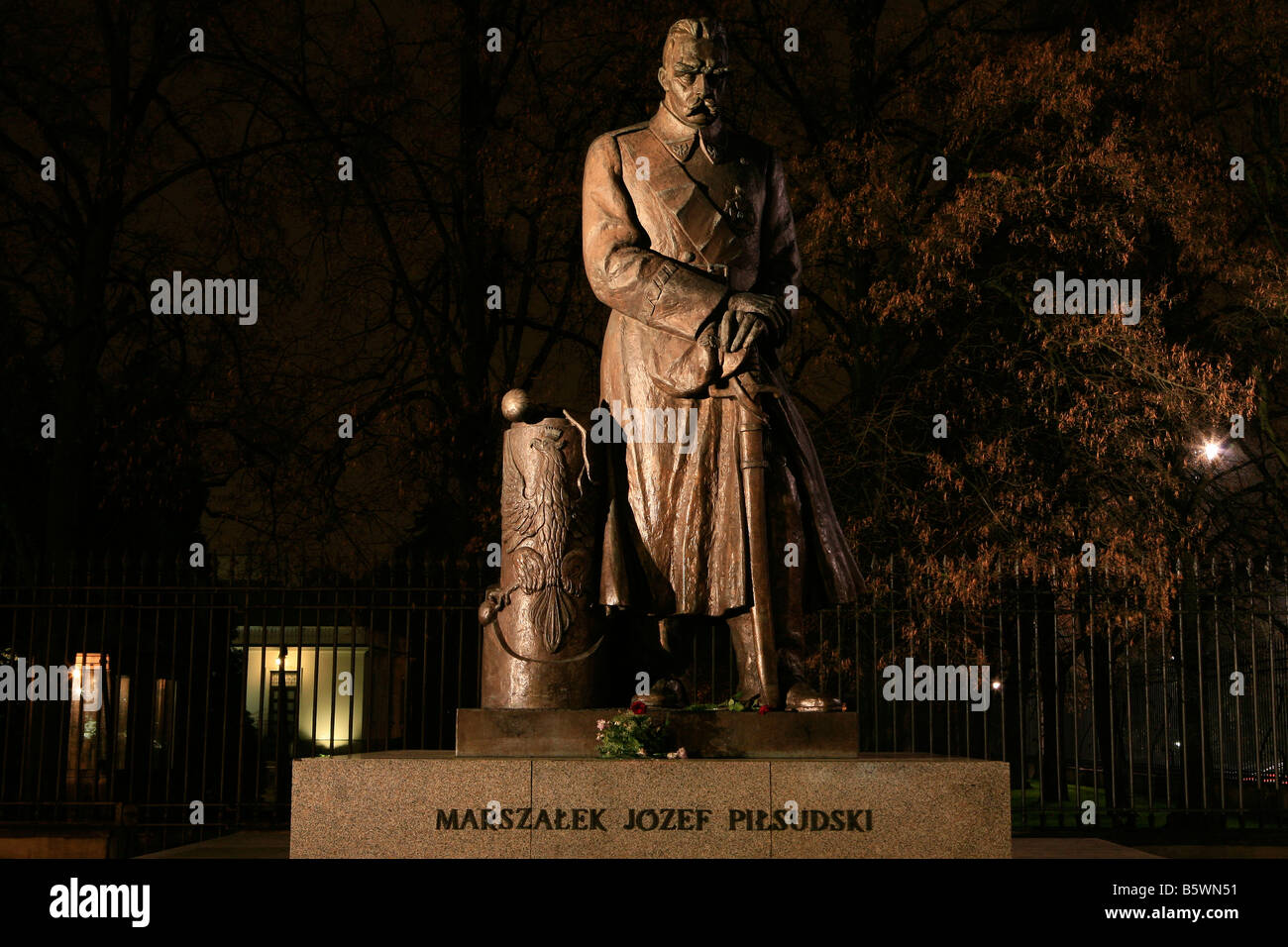Statue of the former Polish Chief of State and First Marshal Jozef Klemens Pilsudski (1867-1935) in Warsaw, Poland

Image details
Contributor:
DE ROCKER / Alamy Stock PhotoImage ID:
B5WN51File size:
52.4 MB (2.2 MB Compressed download)Releases:
Model - no | Property - noDo I need a release?Dimensions:
5242 x 3493 px | 44.4 x 29.6 cm | 17.5 x 11.6 inches | 300dpiDate taken:
22 October 2008Location:
Monument to Jozef Klemens Pilsudski, Warsaw, Poland, EuropeMore information:
Jozef Klemens Pilsudski, (December 5, 1867 – May 12, 1935) was Chief of State (1918–22), "First Marshal" (from 1920), and later (1926–35) the authoritarian ruler of the Second Polish Republic. From mid-World War I he was a major influence in Poland's politics, and an important figure on the broader European political scene. He is considered largely responsible for Poland regaining independence in 1918, after a hundred and twenty-three years of partitions. Early in his political career, Pilsudski became a leader of the Polish Socialist Party. Concluding, however, that Poland's independence would have to be won by force of arms, he created the Polish Legions. In 1914 he anticipated the outbreak of a European war, the Russian Empire's defeat by the Central Powers, and the Central Powers' defeat by the western powers. When World War I broke out, he and his Legions fought alongside the Austro-Hungarian and German Empires to ensure Russia's defeat. Subsequently in 1917, with Russia faring badly in the war, he withdrew his support from the Central Powers. From November 1918, when Poland regained independence, until 1922, Pilsudski was Poland's "Chief of State." In 1919–21 he commanded Poland's forces in the Polish-Soviet War. In 1923, with the Polish government dominated by his opponents, particularly the National Democrats, he withdrew from active politics. Three years later he returned to power in the May 1926 coup d'etat, becoming de facto dictator of Poland. From then until his death in 1935, he concerned himself primarily with military and foreign affairs. For at least thirty years until his death, Pilsudski pursued, with varying degrees of intensity, two complementary strategies, intended to enhance Poland's security: "Prometheism, " which aimed at breaking up, successively, Imperial Russia and the Soviet Union into their constituent nations; and the creation of an "Intermarum" federation, comprising Poland and several of her neighbors.